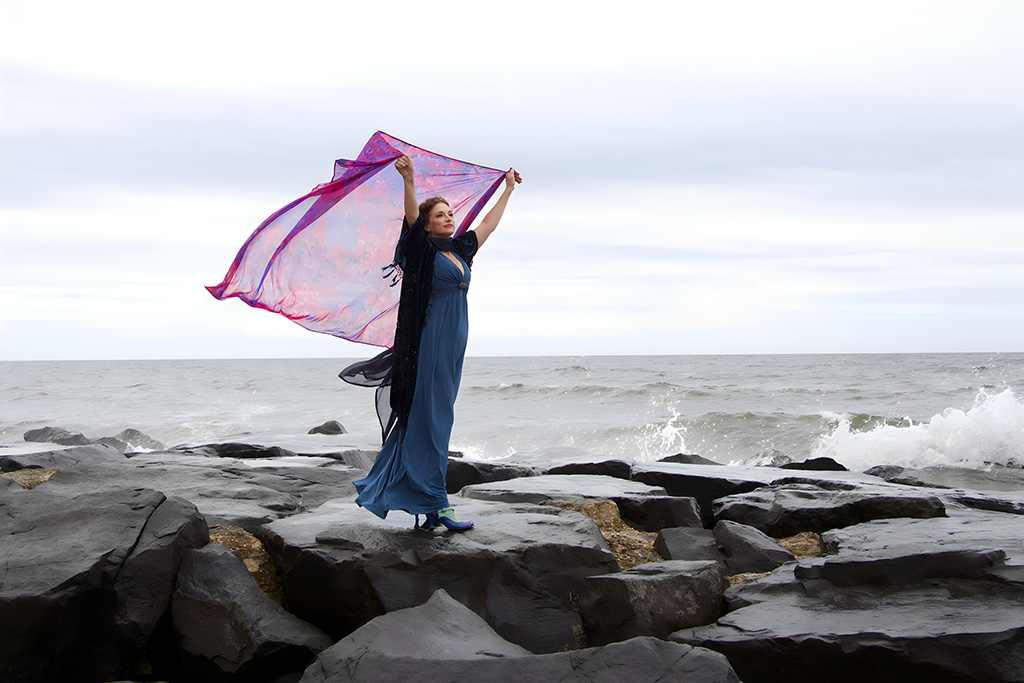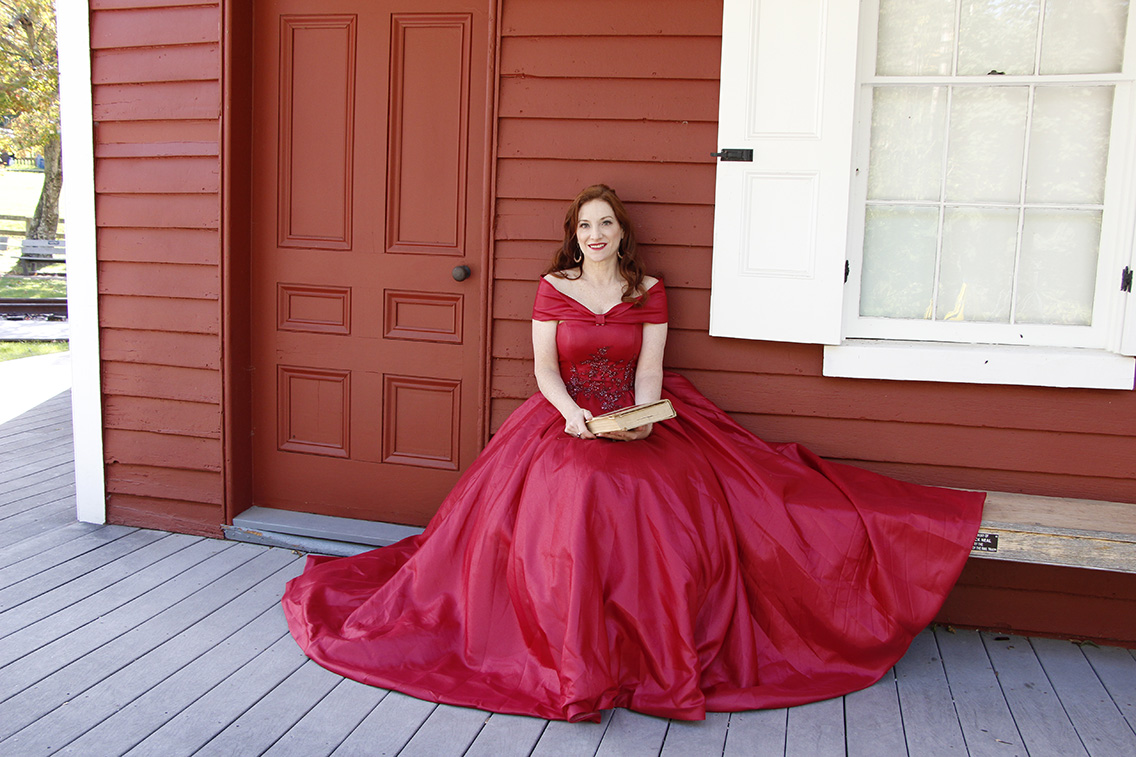Robin Spielberg is an exceptional artist in an industry often marked by shattered dreams. This American composer and pianist has dedicated her life to honing her craft, creating original music, and spreading the transformative influence of music. With an extensive discography to her name, her latest release, “By Way of the Wind,” stands as a testament to nearly three decades of dedication and unwavering commitment. Notably, Robin is on the cusp of a new chapter in her career, embarking on an album tour that will mark her debut performance with symphony orchestras. Her journey is an inspiring testament to the merits of patience and persistence, offering not just solace but hope to countless individuals, myself included.
Classical Crossover Magazine (CCM): First of all congratulations on your 24th album, that is truly an achievement! Can you tell us how the idea for “By Way of the Wind” came about and how it differs from your previous releases?
Robin Spielberg: Thank you! It is always exciting to release new work into the world, but this one is especially meaningful for me because of how long I have worked toward making this project a reality. By Way of the Wind is a collection of my original works, fully orchestrated for full symphony and piano/string orchestra. In the past, I have released music for solo piano, and piano/ensemble, but this is the first album that is fully orchestrated. Like many composers, I have composed works over the years with a full orchestra in mind. I am now in the fourth decade of my career and have thought on and off about realizing my work as originally intended (for orchestra) for 30 years. Then the pandemic hit. And like so many other musicians, my tour was canceled. Being off the “gerbil wheel,” I had time to really think about what I wanted my career to look like going forward. I called my friend and colleague Louis Anthony deLise, who had done some wonderful orchestrations for Peter Nero, Patti La Belle, and others. and he was interested in collaborating. We began by co-arranging one of the more challenging pieces, “Ireland: An Orchestral Portrait.” The process was so enjoyable and satisfying, we kept going. I chose pieces from my catalog that carried a theme that is very important to me: the beauty of the human soul and the resilience of the human spirit.
CCM: “By Way of the Wind” centers on resilience – and that is so important to each musician’s story. Can you share any advice on how to keep going, even during the harder times?
Robin Spielberg: Next to skill, I believe resilience is the most important quality of any musician to achieve success. We must have the ability to handle rejection, to come back from losses, to rise above the challenges that face us, and persevere even when gate keepers say “no.” The best advice I can give is for musicians to empower themselves. You do that by saying “yes” to yourself, and to your own work. This means showing up for yourself. It means scheduling rehearsal time on the calendar for yourself and keeping that time inviolate. It means investing money into your own projects and self-producing your work instead of waiting for others to say “yes.” It means surrounding yourself with people who champion your work and what you are doing…people who lift you up. It means taking risks. No one will believe in your work if you don’t believe in it first. When musicians feel “stuck,” I often advise them to do just one thing every day that moves the ball forward. One thing. It could be sending an email inquiry, composing a few measures, promoting an album on social media. If you do just one thing every day, that is 365 things you have done in a year to move your music career forward! And mostly, people will do more than that one thing. Looking at one’s career as a marathon and not a sprint is helpful.
CCM: Music can be such a positive force for good. Can you tell us a little bit about the projects you are involved in that use music for healing?
Robin Spielberg: I am so glad you asked this question because I am very passionate about the links between music and wellness. I gave a TEDx Talk on “The Transformative Power of Music,” and am often asked to give keynote addresses on the links between music and mental health while on tour. From an early age, music making has made me feel better about myself and my place in the world. As I began to release recorded music, I heard from listeners that they used my music for life cycle events such as weddings and memorial services, for dialysis and chemotherapy, for yoga and relaxation/meditation. But it wasn’t until I became a mother, in 1998, that I started to really explore the links between music and health.
My daughters were born very prematurely at 23 weeks, five days—that’s 16 weeks early. The surviving twin weighed less than a pound and was clinging to life in the NICU for months. I had brought in a portable CD player to drown out the awful noises of the NICU—the beeps and alarms on the machines. I had this idea that maybe because Valerie heard my music in utero, that perhaps hearing it now would calm her. Nurses discovered that her vital signs improved when my music was playing by her station. Her oxygen saturation levels increased; her breathing stabilized. I was astonished. How could such a tiny being, not yet fully developed, show this kind of preference to music? I delved into research and connected with The American Music Therapy Association. I devoured the information; I found the research so compelling and satisfying, and as Valerie healed, I learned how music not only helped preemies in the NICU, but people with Parkinson’s, dementia, ADHD, PTSD, learning disabilities, traumatic brain injury—there are so many applications in which music can be of help. I have served as “National Artist Spokesperson” for AMTA for over 20 years now and am a founding member of the Mindful Music Association, which has as part of its mission to help students learn how to use music to help with anxiety, stress, and depression. In addition to giving keynotes on music and wellness, I have participated in panel discussions, given workshops on “Introduction to Music Therapy,” and have been a guest speaker at several hospitals, including The Mayo Clinic, where I have shared AMTA’s research data with doctors and nurses on the positives of having music therapists on staff.

CCM: The “New Freedom Suite” in particular focuses on veterans. Can you share a little about what types of things musically you incorporated when composing this suite?
Robin Spielberg: The “New Freedom Suite” is in three parts, germinated from ideas that began decades apart. In 1987 I was working on a play in Vermont with The Atlantic Theater Company. In addition to being a founding ensemble member of the company, I was often asked to compose interlude music that was used for underscoring the drama on stage as well as scene changes. The opening notes of the first movement, “Memories of Utopia,” were used during the protagonist’s monologue, in which she speaks of creating a utopian society after the Civil War. The snare drum rhythm represents the consistency and determination of warriors who are also dreamers—-the ones who do not give up on their ideals no matter what the cost. The movement builds to a very optimistic idea of what victory would look and feel like, which is not how war usually ends. The second movement, “Soldier’s Journey,” began as a bugle call back in the early 1990’s. I had been scoring the music for David Mamet’s adaptation of Chekhov’s Three Sisters. The Annenberg Center in Philadelphia produced the play before it moved to New York. The night we opened the Persian Gulf War broke out. When I returned to my rented room that evening, I worked the bugle call into “Soldier’s Journey,” with the knowledge that military personnel were packing their bags that very evening to embark into the unknown. Louis Anthony deLise and I decided to use flutes and woodwinds to express the innocence of these soldiers, as they knew not what would lie ahead. They literally ‘waltz’ into war. The war in Ukraine motivated me to compose the third movement, which I entitled “One Step Closer.” It is a tribute to freedom fighters. The movement’s steady percussion beats represent putting one foot in front of the other and making progress one step at a time. The piano leads the way and is later joined in by the entire orchestra, one section at a time. The motif grows stronger as the numbers of allies increase. It is a movement for dreamers, but this time, unlike the first movement, there is no idealism, only reality. My idea here was to express my wish for everyone, every day, to be one step closer to their dreams. Utopia may not be possible, but getting one step closer is.
I decided to entitle the entire suite “New Freedom Suite,” as not only do I live in a town called New Freedom (with roots to the underground railroad) but on any given day, we can decide to free ourselves of whatever has been holding us back. That could include negative ways of thinking, bad habits, things that are no longer serving us. The suite is an anthem for anyone looking for this kind of freedom in life. I personally found “new freedom” when I moved with my husband to New Freedom, PA. When I listen back to the suite, it is a reminder of how far we have come, one step at a time. We moved here to be closer to medical care for our daughter—she was going to Johns Hopkins—and small-town living turned out to be healthier for all of us.
CCM: You wrote a book entitled, “Naked on the Bench: My Adventures in Pianoland” about the life of a touring artist. You yourself are planning to get back to touring in 2024 for this album. What are some of the things you look forward to or perhaps what are some challenges you’ll be preparing for?
Robin Spielberg: By Way of the Wind releases this October on all digital platforms and in a special boxed set filled with cards, quotes, poetry, writings, line drawings, a CD, and an enamel pin—it’s a beautiful package (robinspielberg.com) and I can’t wait for people to see it at the live shows. The live orchestral premiere will be in November in Lake Jackson, TX and we are in the process of booking local orchestras across the US for this thematic concert experience in 2024-2025. I really look forward to playing this work live with symphonies. To prepare, I have been practicing to the recorded tracks sans piano, with headphones—-so I have the orchestra in my ears as I practice. I am still touring as a solo performer with my concert films and stories, and have solo piano concerts planned in Michigan, California, Florida, Ohio, Arizona, Nevada, and New York, so the real challenge is going to be learning to work with different orchestras that have different configurations, adjusting the music parts accordingly, and adapting to each conductor’s style.







